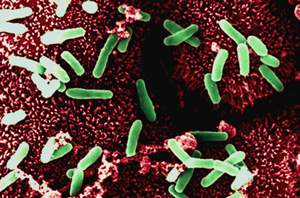
Clostridium perfringens – a relative of the bacteria that cause botulism and tetanus – produces a potent toxin (epsilon-toxin) that can be fatal to livestock and is considered a “select agent” by the U.S. government due to its potential danger to humans. There are no therapies to counteract the toxin in humans, and the host mechanisms that allow the toxin to damage and kill cells remain unclear.
Mark McClain and colleagues identified cells resistant to the toxin and investigated the differences in gene expression between resistant and sensitive cells. They identified several genes, including HAVCR1 (hepatitis A virus cellular receptor 1), which may account for the difference in toxin sensitivity. Further experiments showed that HAVCR1 binds epsilon-toxin and is more abundant in human kidney cells than in human cells that are resistant to the toxin.
The findings, reported in PLoS One, suggest that HAVCR1 and the other genes may contribute to epsilon-toxin-induced cell death and represent new targets for therapies against this potential bioweapon.